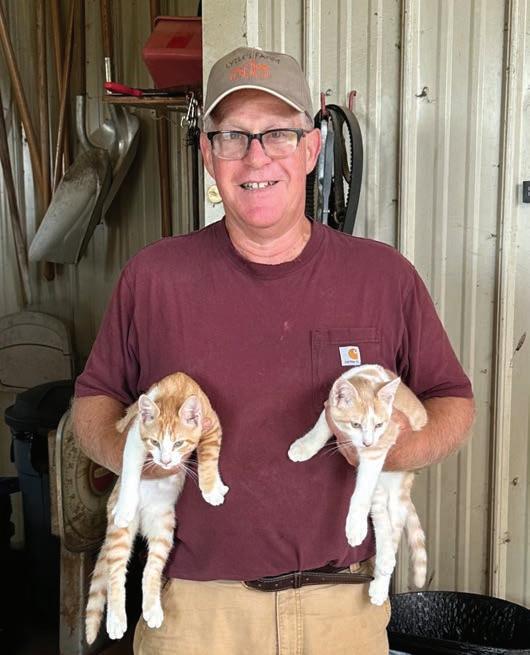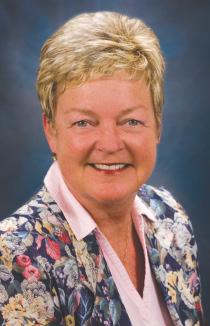Kennett Square Life





































































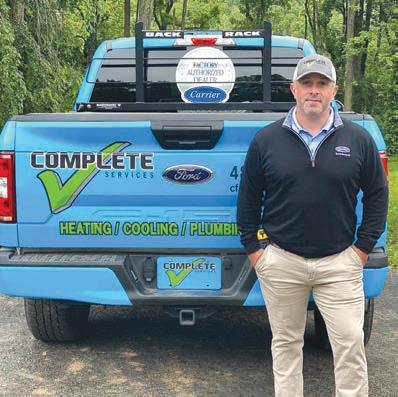








































































































































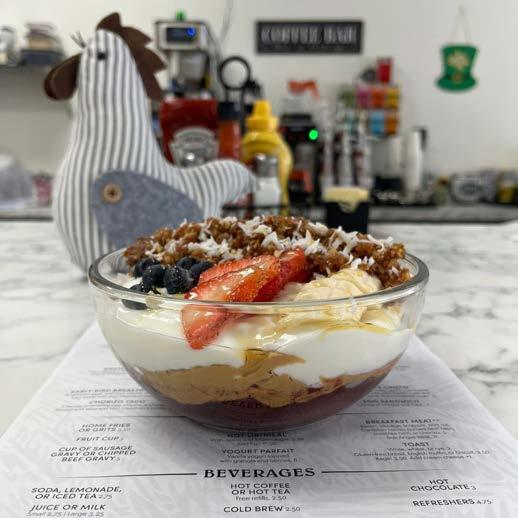






















































































































































































































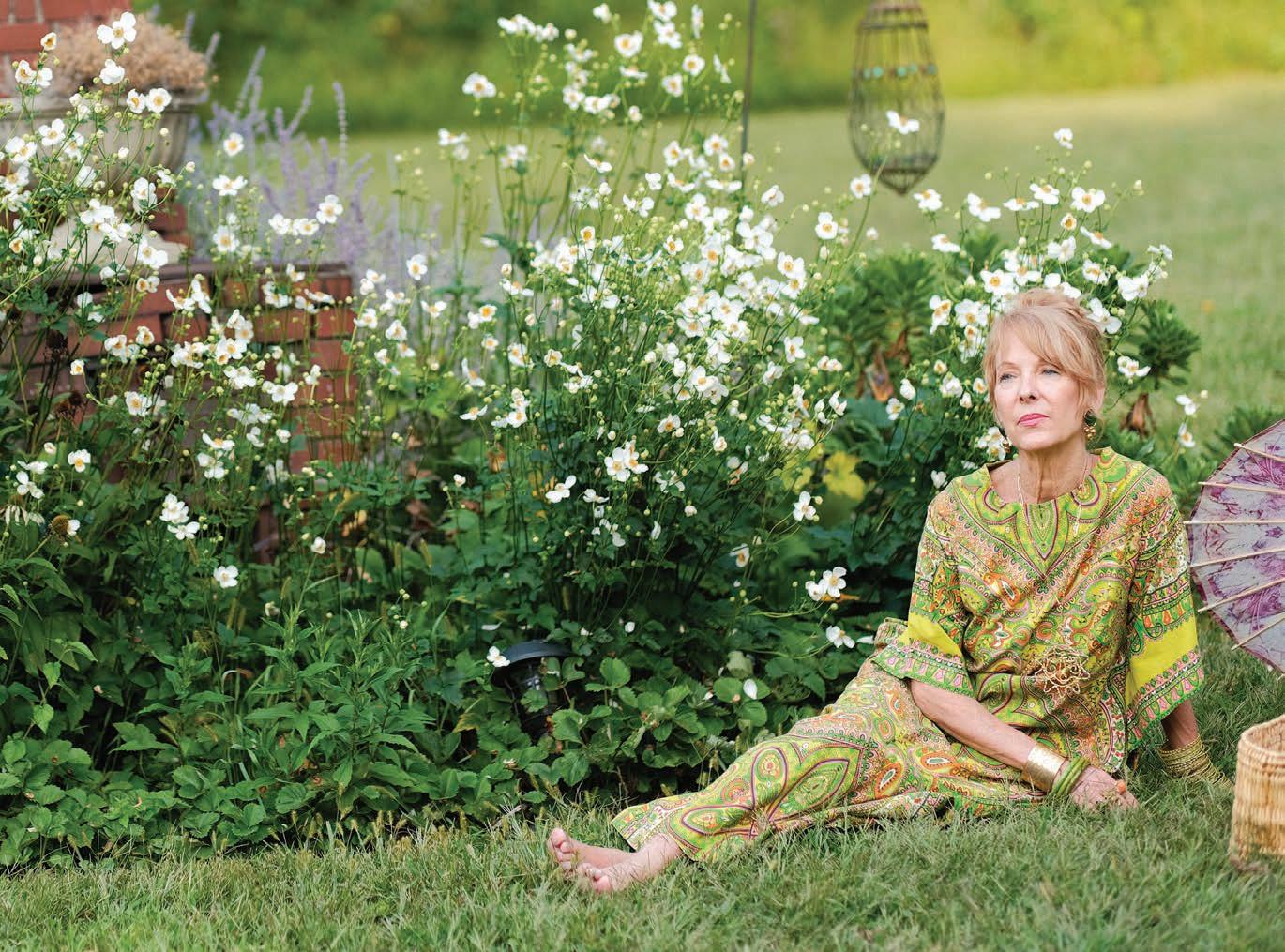



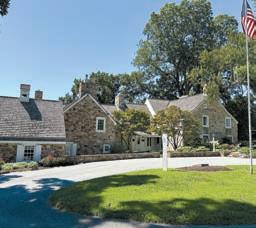


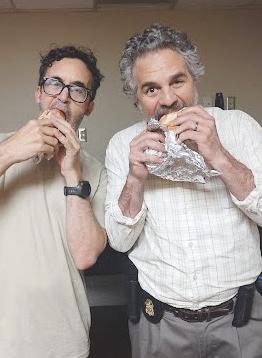
Letter from the Editor:
Welcome to the Fall/Winter issue of Kennett Square Life.
Anyone who lives or works in Kennett Square knows that the area is filled with talented and interesting people. One such person is Mike Altman, who excels at an ancient Japanese woodworking technique. Altman grew up in a family of makers and began working with wood as a kid, making everything from a pair of stilts to a wooden safe. After college, he began building furniture— bookshelves, beds, and tables. More recently, he became skilled at kumiko, a technique, begun a millennium ago in Japan, in which thin wooden pieces are carefully assembled into intricate patterns, often without nails or glue.
Continued on Page 9
The New Bolton Center is a hidden jewel in East Marlborough Township. It is home to a top-rate teaching facility and research center in addition to being a world-renowned large animal hospital. In this issue, we not only look at the work being done at the New Bolton Center, we also take a look at a day in the life of a country veterinarian as we profile Dr. Mary Jane (MJ) Drake. She is an assistant professor of clinical food animal field service at the University of Pennsylvania New Bolton Center.
The subject of the Q & A is Michael Bertrando, an actor and an owner of Sam’s Sub Shop in Kennett Square. Recently, Michael met with Kennett Square Life to talk about the family business, working with Robin Williams and Mark Ruffalo, and his latest role on the HBO series, “Task.”
We also take a look at Kendal-Crosslands at Longwood’s four-phase, $56 million expansion and renovation project that will improve the lives of its residents well into the future.
The photo essay, titled “Time outside of time,” focuses on Jane Norley of Unionville.
We hope you enjoy the stories and photos in this issue of Kennett Square Life. We welcome your comments and suggestions for stories to highlight in a future issue of the magazine. We’re already hard at work on planning for the next issue, which will arrive in the spring of 2026. Until then, enjoy the holidays!
Sincerely,
Avery Lieberman Eaton averyl@chestercounty.com

Stone Lieberman stone@chestercounty.com
Steve Hoffman, Editor editor@chestercounty.com
Cover design: Tricia Hoadley
Cover photo: Courtesy of Dr. Mary Jane (MJ) Drake
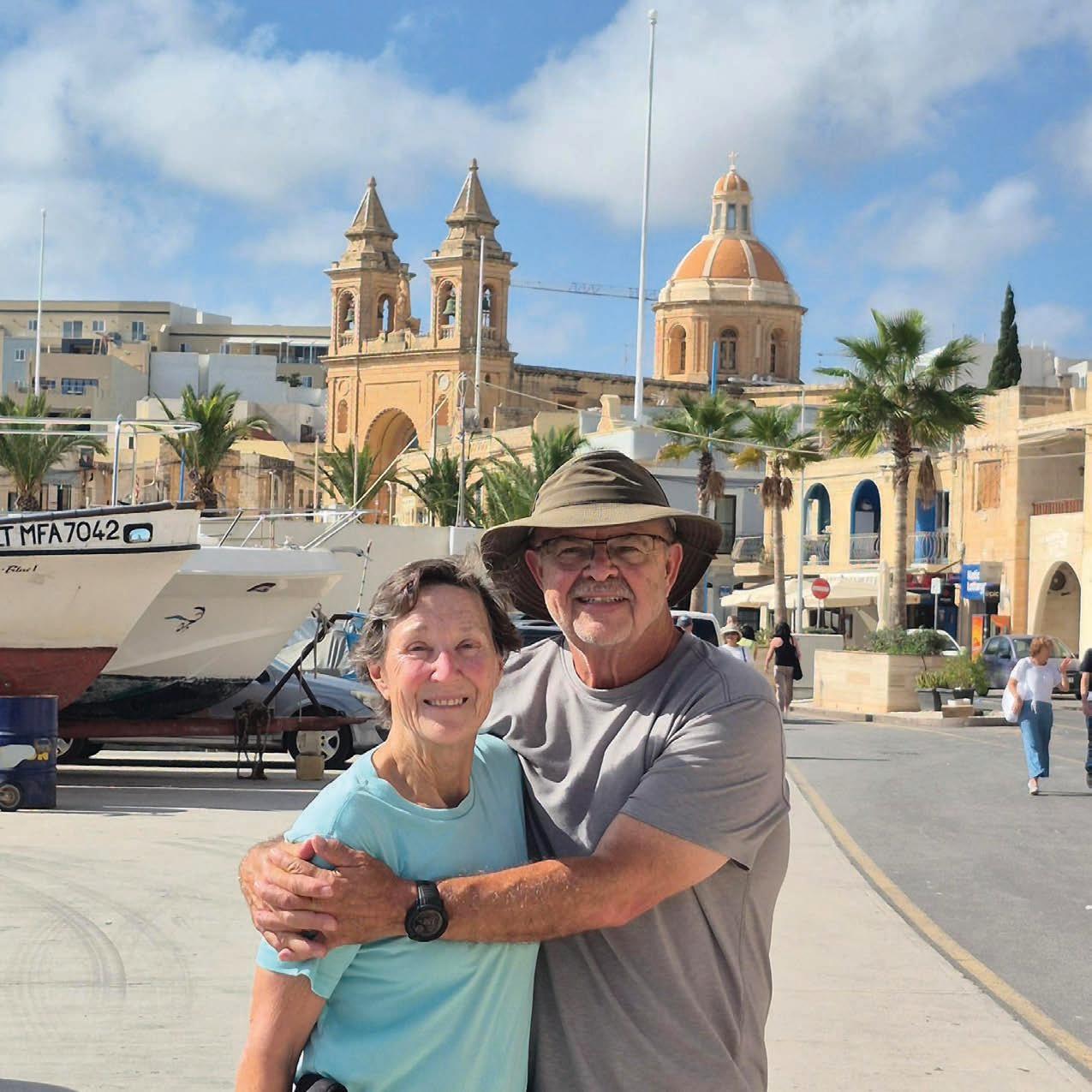
An accidental meeting recently connected a writer with former attorney, photographer, world traveler and Kennett Square resident
Steve Fender and his wife, Lynn. The couple’s journeys, the writer found, have been brilliantly captured through Steve’s lens
By Caroline Roosevelt Contributing Writer
There is a Latin adverb for “Travel.” Peregre.
Specifically, the word refers to being “abroad in a foreign land,” and literally it translates into, “through a field,” or “beyond the field” depending on the text you reference. Both the word and its concept, encapsulated in a dead language, humbles me as I begin to meander through the internet and scour through my Thesaurus for a word somewhere out there that can best define and describe Kennett Square resident Steve Fender.
Accompanied by his wife, Lynn, Steve Fender is all things Peregre. He has ascended the sloped, spiral stairs of SainteChapelle in Paris. He has brushed a hand through the long grass of the Serengeti. He has stared at the sky through the oculus of the Parthenon ruins of Greece. He has traveled from Yaletown to Granville Island in Vancouver on an aqua bus. He has gazed in stunned silence at the Angkor Wat in Cambodia.
Fender’s passion for travel – that intoxicating sensation of being somewhere else - conjures a universal, heart-heaving jolt of gratitude for the past, the present, the future and maybe a curiosity of what other strangers are experiencing on that same existential voyage.
Continued on Page 12

Continued from Page 11
For me, my universal voyage with Steve and Lynn started around a table at Acadian Wine Company in West Grove on a sunny weekend afternoon this past May.
While on assignment from the Chester County Press to cover the Peony Festival in late spring, my sister and I enjoyed a tasting flight each and decided to roam the rows of blooming peonies. Upon returning, our table had been snatched up by a kind-looking couple who beckoned us to join them, and we shared the next hour and a half of the afternoon together.
Lynn Fender, a tall, slender woman with excellent posture and short, gray hair pushed back in neat waves with small shocks of white, sat next to her husband, Steve, who sported short gray hair that peaked out from his baseball cap, and a sturdy countenance that conveyed friendly confidence. Within the span of an introductory conversation, a table of strangers quickly became new friends. We discussed travel, politics, family, and of course, how they’re finding their relatively new digs in Kennett Square. As the tangerine sun slipped behind rolling hills surrounding Acadian, we
cemented dinner plans with our new pals in which they’d host us at their home just outside Kennett Borough.
My sister picked me up for our dinner at the Fender’s. As Steve took our coats, Lynn – whom Steve referred to as “a force of nature” - moved strategically from one side of the kitchen to the other, putting finishing touches on dinnerchicken, salad, fresh rolls and brownies. A few years ago, the Fenders left Coeur d’Alene, Idaho - where they had raised their four children – and purchased a beautiful, sprawling rancher on a small hill near Kennett Square Borough.
In describing their children, Steve said that he and Lynn would assign them to write an essay a week.
“They weren’t assignments for school,” he said. “We wanted them reading and using their brains in the summer.”
Steve also mentioned that their children attended summer math courses as well. All for the better, because today, one of their daughters is a cardiologist, and their other daughter is a former prosecutor for the Department of Justice in their counterterrorism department.
Continued on Page 14






As the food dwindled on our plates, my sister and I broke off into separate conversations with the Fenders – she with Lynn and I with Steve, where eventually, he delved into his life story. He grew up in Clearwater, Florida, later attended Georgia Tech on a football scholarship for a couple of years before moving on to work odd jobs that included sanding barnacles off of the hulls of sailboats.
In 1976, he met his wife, Lynn, at Ft. Huachuca, Arizona. Lynn worked in the program in which Steve had enrolled to become a military interrogator.
“You pick a language, and I ended up with Polish,” he said. “However, I’m not a great speaker, so most of my work ended up as translating documents.”

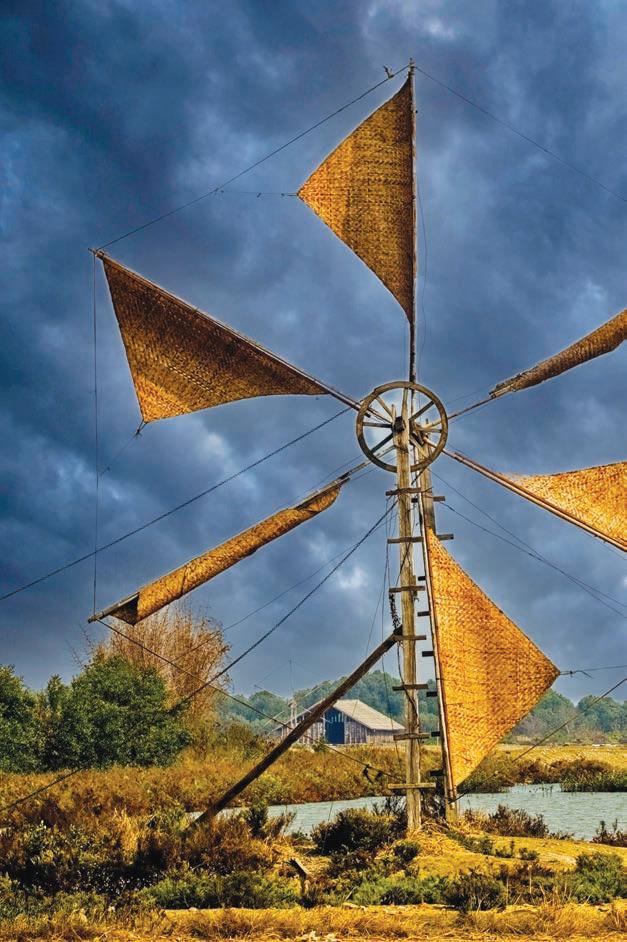
Lynn and Steve remained friends through the next several years. Eventually, Lynn was sent to Germany on assignment and, according to Steve, the brief, but pivotal conversation went as such:

“I’ve scouted the talent here,” Lynn told Steve. “Would you like to get married?”
Without pause, Steve responded back, “Name the date!”





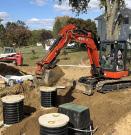

Continued from Page 15
A United Nations roll-call
So let us go back to Peregre
The word stems from Perigrinus - the root for the modern English term, “Pilgrim.” To describe the Fenders as pilgrims may be more apt than tourists, as the interest in travel ascends aesthetics, and is clearly embedded in a more tactile quest for discovery - one that led them to their work in military interrogation in the first place. They’ve been everywhere, man, they’ve been everywhere: Argentina, Australia, Austria, Bali, Brazil, Bulgaria, Cambodia, Canada, Chile, China, Colombia, Costa Rica, Croatia, Denmark, Ecuador, Egypt, England, Estonia, Finland, France, Germany, Greece, Hong Kong, Iceland, Ireland, Israel, Italy, Japan, Jordan, Kenya, Latvia, Lithuania, Mexico, Namibia, New Zealand, Norway, Peru, Poland, Romania, Russia, Scotland, Serbia, Singapore, South Africa, South Korea, Sweden, Switzerland, Taiwan, Tanzania, Turkey, Vietnam and most recently, Malta.
Continued on Page 18











from Page 16
Their list of voyages reads like roll call at the United Nations - and includes less name brand vacation mainstays – and I yearned to find the hidden gems of each visit.
“Where is the best food?” I asked.
“Rome, Italy,” Steve said.
“What country surprised you?”
“Russia,” he said. “The people of the country are very friendly.”
Steve spent a year at the Defense Language Institute learning Polish followed up by 18 months in Munich. Once out of the army, Steve and Lynn moved to California. He attended law school at night while working more odd jobs, making tacos and working at Radio Shack. He passed the California Bar in 1982, and he and Lynn both practiced real estate law for several years. In between, they acquired property and eventually moved from California to Idaho, where they settled in Coeur d’Alene for several years.
I had been hunched over the dark wood dining table,
ed us to the basement level of their home to introduce us to his photography studio, where he proudly displayed his large computer monitors he uses to edit his nature, sports, travel and street photography.
“A typical day includes driving out to locations, setting up for my photography shoots,” he said. “I’ll be out from morning to evening.”
Now retired from law, Steve spends his time sharpening his photography skills. He told me that he enjoys the hobby for the sport of it and less for the esoteric film name-dropping. Standing in the basement amidst the monitors, the camouflage gear, the camera equipment, we pull up his Instagram account on my phone and scroll through photo after photo of immaculate action shots of birds in motion, athletes caught in mid-gasp. I’m stunned by the intimacy of the street photography of a puppeteer in Sienna, Italy, a baby crawling out of a doorway in Vietnam, and a Peruvian woman in a bright red wool hat staring into the lens of his camera. Steve has perfected the art of active observation - narrowing in on his subject, thoughtfully connecting with subject, and meticulously timing his moves to capture the perfect image.


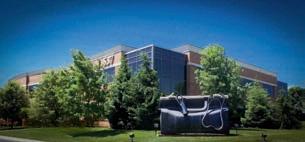





Continued from Page 18
My sister and I thanked Lynn and Steve for their hospitality, and since then, I have continued to marinate on that evening - the importance of communing with new friends as a balm, sharing a simple meal, learning about each other before vetting them through a social media echo chamber. Steve - a keen observer, methodical and swift and migratory in nature - reminds me of the Peregrine Falcon which, ironically, is one of Steve’s avian photography subjects. I’m brought back to that Latin adverb Peregre and the beauty in its meaning, which is not merely just to travel, but to be “beyond the fields.”
In these tumultuous times, may we all connect and meet somewhere beyond the field. These are the experiences, I believe, that will save us.
A few weeks later, Steve and Lynn Fender were on their way to Malta.

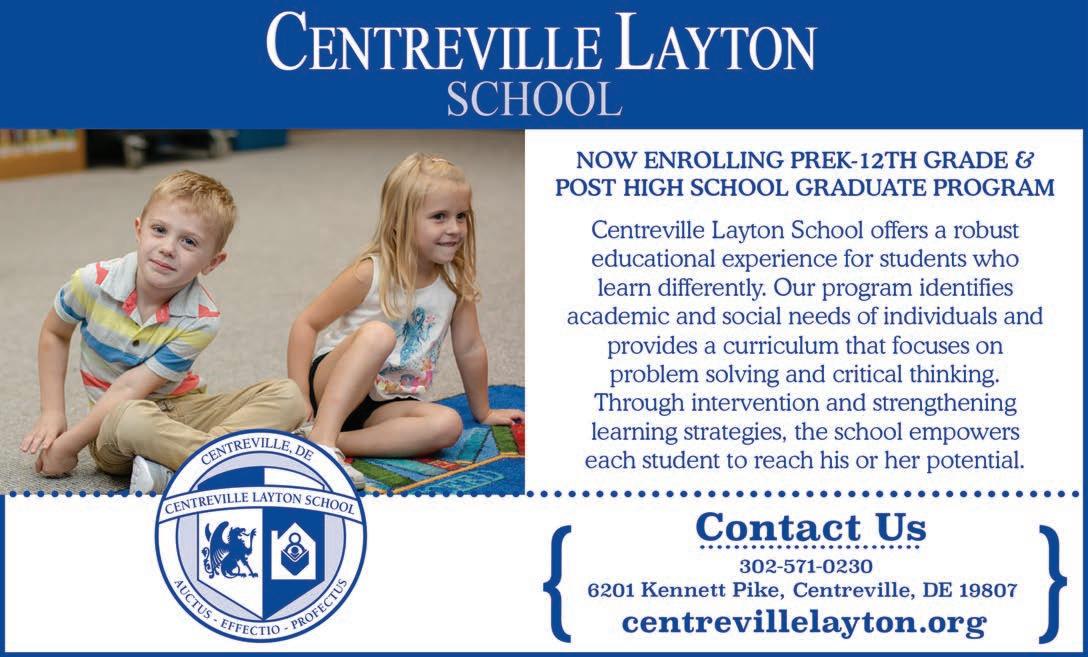






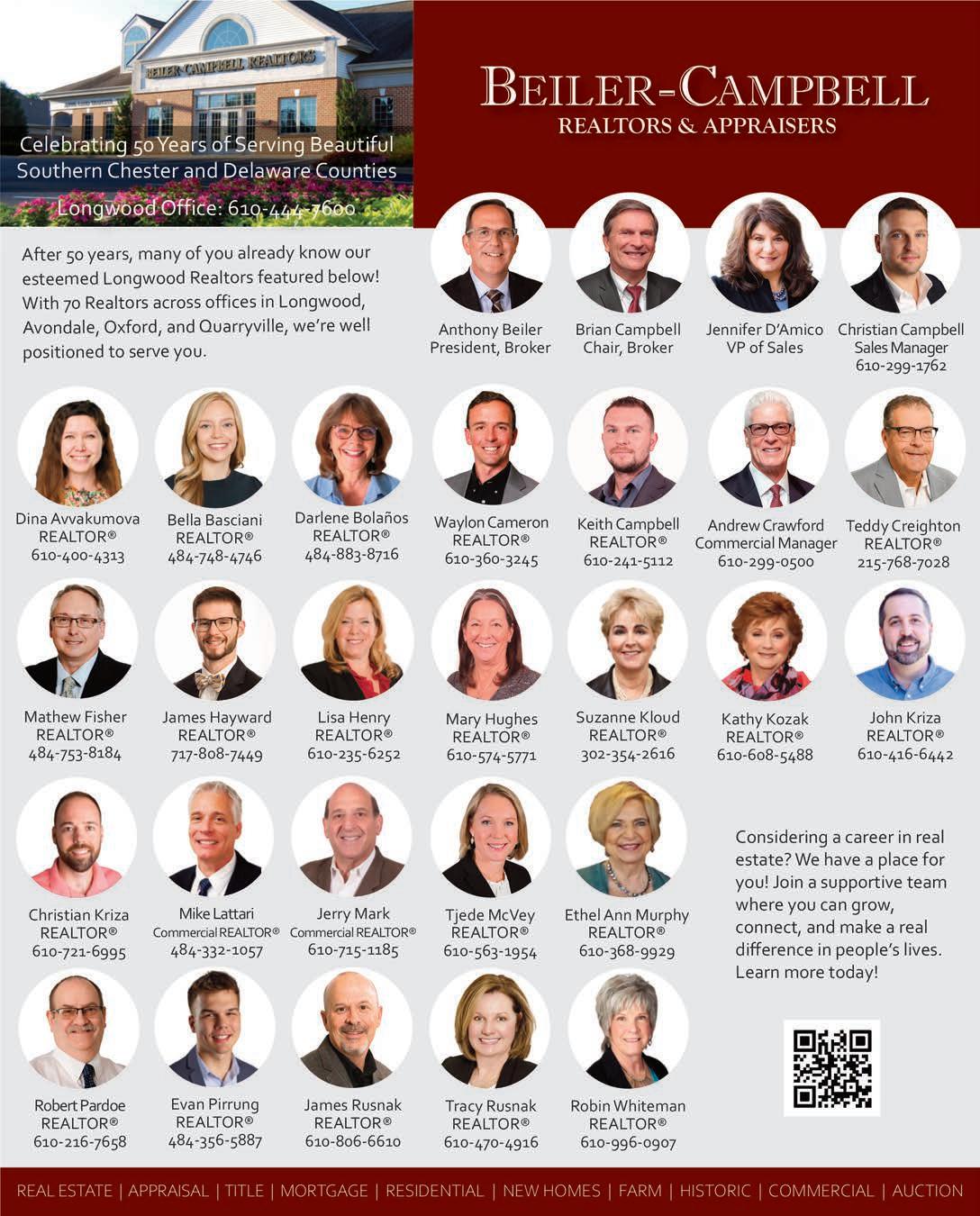



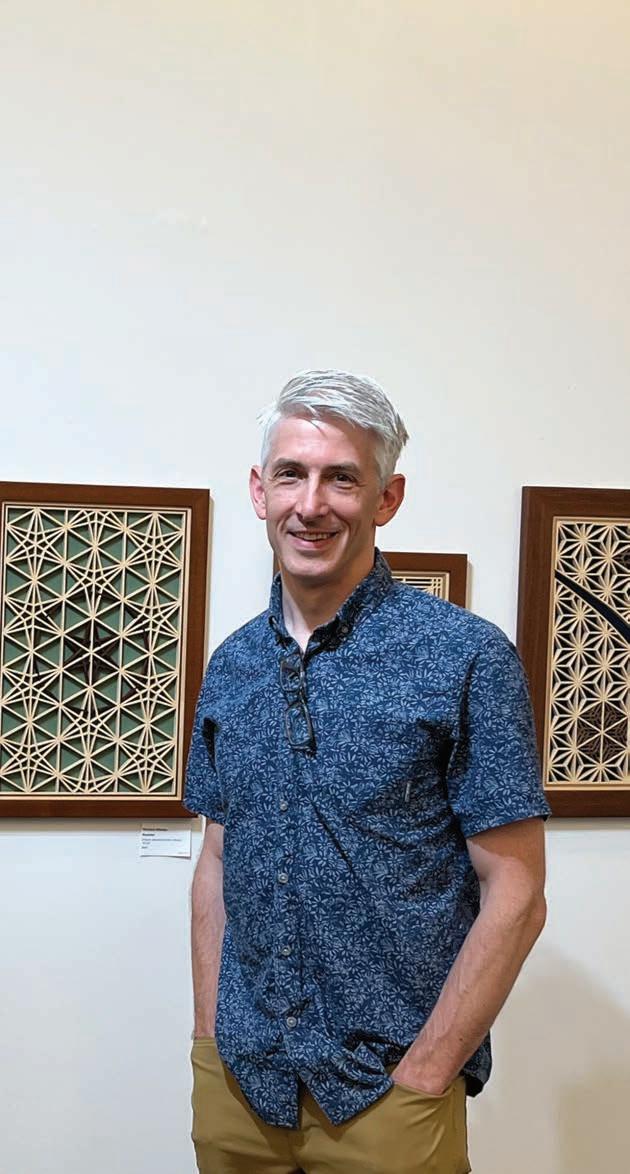

By Ken Mammarella Contributing Writer
Mike Altman grew up in a family of makers, and began working with wood as a kid, making a pair of stilts (for “the challenge”) and a wooden safe (“to keep things away from my older brother”).
“After college, I started building furniture – bookshelves, beds, tables, that sort of thing, driven by my own personal needs,” the New Garden Township resident recalled. “I made a handful of things for some friends – a bed, a porch rocker and some cabinets,” but it was still just a casual hobby.
Then early in the pandemic, with lots of time at home, he saw an article in Fine Woodworking about a piece of furniture featuring kumiko, a technique begun a millennium ago in Japan in which thin wooden pieces are carefully assembled into intricate patterns, often without nails or glue.
“I just became curious, and I tried to do some myself,” he said. “I wasn’t very good to begin with, so I took a class at the Philadelphia Furniture Workshop.”
His skills grew with more lessons, a scouting trip to Japan and a lot of effort (he devotes eight to 10 hours a week in his basement wood shop).
Continued on Page 26
Continued from Page 25

“Once I started doing kumiko, I stopped doing almost any other traditional woodworking. I wasn’t necessarily starting out to make art, but I was just interested in the style,” he said.
“The beauty, technical challenge and tradition have made it a primary focus of my work,” he wrote on his site, www.timbersaga.com. He also sells works on Etsy and at fine-arts festivals. His pieces start at $75 and can top $1,000.
Altman is a Coatesville native with a bachelor’s degree in mechanical engineering and a master’s in business administration, and has worked at W.L. Gore since 1996, with whom he has taken two trips to Japan. His third trip to the country, however, was to learn more about the art of kumiko.





“I kept my eyes open, because I wanted to see kumiko in its natural habitat,” he said. “And I saw a lot. The airport. Restaurants. Doorways we saw walking down the street. And there was this shop in Tokyo with a whole section on kumiko and its architectural features in doors, screens and dividers.”
Traditional kumiko includes dozens of designs, most inspired by nature and offering good omens.
In his work, Altman limits himself to solid wood, mostly sourced from Hearne Hardwoods in Oxford (huge selection, sustainably harvested), with his favorite being Alaskan yellow cedar for its pale color, straight, sometimes-unnoticeable grain and ease of working with. His second favorite is walnut, which offers a nice color contrast to the cedar. He uses power tools to cut the wood into standard pieces, 3.1 to 3.3 millimeters thick (the width of his jigsaw blade) and 11.8 millimeters wide (it just feels right).
Continued on Page 28
Continued from Page 27

After that, he relies mostly upon hand tools made in America and Japan – planes (kanna), chisels (nomi), hammers (genno) and saws (dozuki) – to precisely trim the pieces, create interlocking notches and form ends tapering at the right angle, with a V-shaped point or a point with an inverted V. People often ask if his work is laser-cut, a question that he now considers to be a compliment.
He sells his work as art, with a distinct dimensionality, to hang on the wall, with names like “Cascade,” “Eclipse,” “Energy” and “Sakura” (which means “cherry blossom”). Some pieces look like trivets, but the wood is too soft for that. Ones that look like snowflakes can decorate a Christmas tree.
As Altman becomes more experienced in kumiko, he has incorporated more wood, become more creative in his designs and uses more challenging patterns involving as many as 700 pieces.
Continued on Page 30

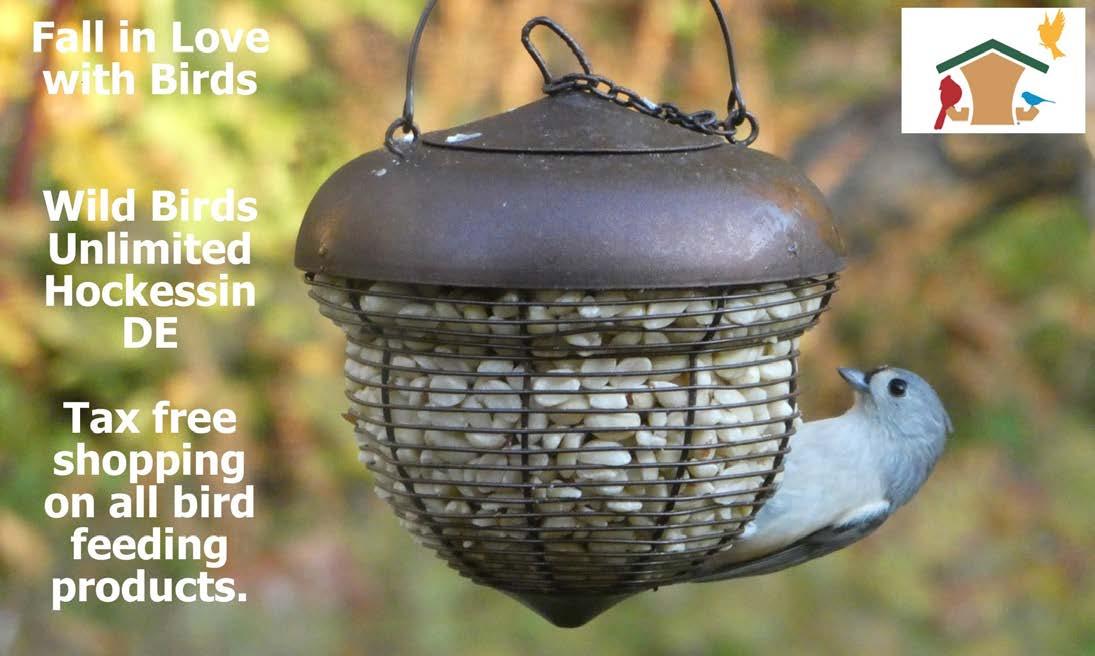


Altman






“Almost all of my work is one-off, in terms of design,” he said. “I like creating something new and mastering something that I’ve never done.”
“We were really excited to showcase Michael’s work because it’s so different from anything we’ve featured before,” said Victoria Abadir, founder of the Lancaster Art Vault, which displayed the works for two months earlier this year.
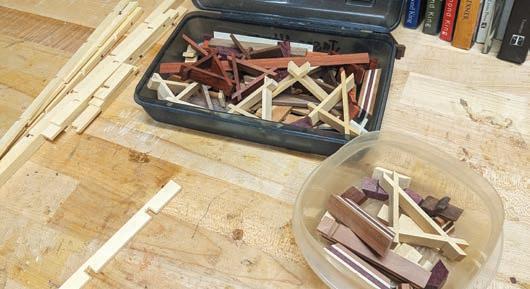


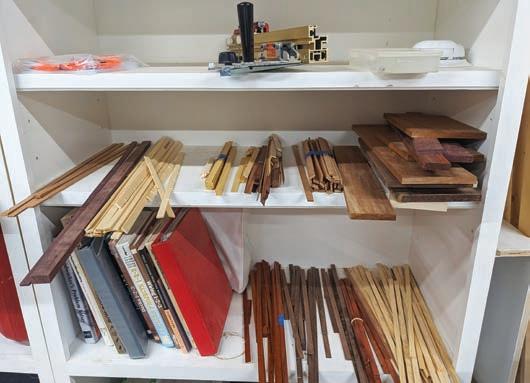
“The craftsmanship and the uniqueness of the Japanese kumiko technique immediately stood out to us. Each piece is so precise and beautifully made – you can truly see the care and intention behind it. The response from our guests has been overwhelmingly positive. People are drawn to the intricate patterns, the natural wood tones and the elegance of each piece. It’s clear that Michael brings a deep respect for the material and tradition to everything he creates, and we’re honored to share his work with our community.”







In February of 2024, Kendal at Longwood broke ground on a $56 million, four-phase expansion and renovation of its health center that also included the construction of additional independent living apartments.

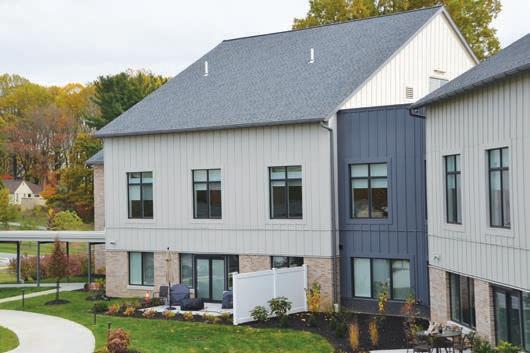
The first phase of the 35-month project was completed in August, and provides 18 independent garden apartments and several social spaces where residents can meet for events and conversation.

In 2024, with focus on its community’s health care needs, Kendal at Longwood embarked on four-phase, $56 million expansion and renovation project that will improve the lives of its’ residents well into the future
By Richard L. Gaw Staff Writer
In the early 1970s, when the idea to build the build the Kendal at Longwood community was first imagined, the original architects of its vision believed that it would be grounded in the bedrock of Quaker values and transform the experience of aging through groundbreaking advances in independent living and healthcare.
In 1973, when Kendal at Longwood accepted its first four
residents, seniors made up about 10 percent of the U.S. population, but as the community grew over the years, it did so against the backdrop of a new reality, one that now continues to see the graying of the Baby Boom generation. Now, more than 50 years after the Kendal-Crosslands concept first began, nearly 60 million Americans are aged 65 years or older - 18 percent of the population - with the Population Reference Bureau reporting that seniors are projected to reach 82 million by 2050 - a 47 percent increase over the next three decades.
Continued on Page 34

Continued from Page 33

For the first five decades of its existence, Kendal at Longwood provided care for those residents who were born at the turn of the 20th Century. As it began to lay the groundwork for its next 50 years, the community realized that it needed to explore ways to make life better for the next five decades of residents.
A decade ago, Kendal at Longwood staff, residents and board members began to collaborate on a plan that would integrate new healthcare systems onto the campus and prioritize comfort, safety, accessibility and personal connection with medical professionals. In February of 2024, they broke ground on a $56 million, four-phase expansion and renovation of its health center that also included the construction of additional independent living apartments. The projected completion date of the 35-month project will be during the first quarter of 2027.
The project was designed by the architectural firms
Lenhardt Rogers and Perkins Eastman and is being constructed by Benchmark Construction – all of whom have ample experience in designing and building senior living communities.
“I am tremendously proud of this initiative at the Kendal at Longwood campus,” State Sen. John Kane said at the expansion’s groundbreaking on Feb. 24, 2024. “The fusion of natural surroundings, cutting-edge technology and modern sustainability measures to creative and empathetic solutions that our world desperately needs today.
“This reimagined health center will not only provide exceptional care, but also significantly enhance the quality of life within the community. It is heartening to see Kendal at Longwood’s unwavering commitment of providing exceptional care for our community.”
“The need to expand our healthcare services stemmed from our care delivery system,” said Kendal-Crosslands Communities Chief Executive Officer Lisa Marsilio. “It was all about how we deliver care to our residents, and how we deliver care in a way that is integrated both from indepen-



Communities Chief Executive Director Lisa Marsilio. Seth Beaver, Kendal-Crosslands Communities vice president of community operations.
dent living into a personal care system that incorporates that transition in a very seamless way.
“We approached this expansion from the standpoint of, ‘How does it feel more like home as you transition through
the continuum of care? How do we integrate all of the services our community needs – like caring for those with memory challenges and continuum of care – so that it
Continued on Page 36

becomes a seamless transition, and how do we make sure that the services we have today will meet the needs of the residents of tomorrow?’”
The first phase of Kendal at Longwood’s expansion project – building new personal care wings and adding 18 independent living garden apartments – was completed in August, but it’s just the start of a larger plan whose foundations are steeped in a philosophy that looks at the entire system of care journey for a resident.
Over the course of the renovation’s multi-year lifespan, the new Kendal at Longwood Health Center will include an enhanced Resident Care medical clinic and personal care and skilled nursing residencies.
One of the key components of the project will also reflect Kendal at Longwood’s commitment to environmental sustainability. Working with Steven Winter Associates – a leading expert in energy-efficient designs - the expansion’s infrastructure will include solar power that will help reduce energy use; energy-efficient lighting and HVAC systems; environmentally friendly building materials; and


best practice water conservation and rain-water management priorities.
“Every facet of this project has had some sort of sustainability initiative around it,” said Seth Beaver, Kendal Longwood’s vice president of community operations. “Our residents are very passionate around sustainability, so having the Steven Winters group here for presentations on sustainability allowed our residents to play a role in the decision-making process.”
Among the many services that the expansion and renovation at Kendal at Longwood will continue to enhance is in the area of helping residents with cognitive impairments in a memory care program, through
Continued on Page 38










Continued from Page 36
the application of Montessori principles. Inspired by Dr. Maria Montessori’s principles and under the guidance of Jennifer Brush, a leader in the field of Montessori for Older Adults, Kendal at Longwood promotes learning through a prepared environment and hands-on experiences.
Set to fully open in 2027 in the newly redesigned health center, Kendal at Longwood’s Montessori principles will be seen in the form of labels and visual cues to help a resident’s ability to navigate throughout the facility; accessible materials to promote spontaneous engagement; and the addition of quiet zones for reading and reflection that will continue to empower residents to live meaningful lives.
It’s part of Kendal at Longwood’s person-centered approach that honors each resident of the program – their history, their strengths, their preferences and their wish to engage in the entire community.
“To give an example of our Montessori initiative, if a resident was a woodworker their whole life, there
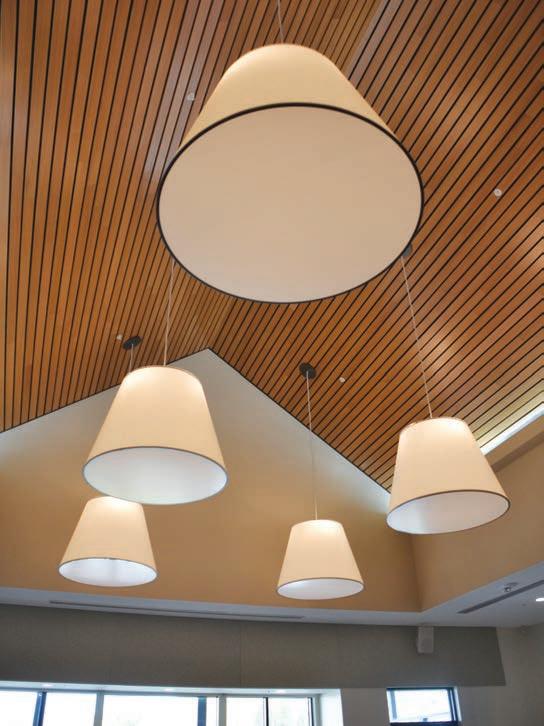

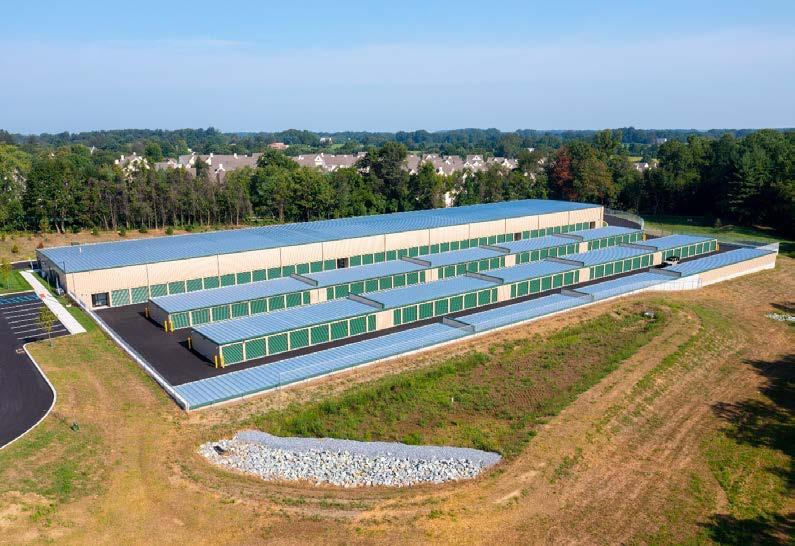

will be an activity station in the new health center where they can perform some small tasks putting things together that involve the familiar feel of tools that will keep their mind active and engaged,” Beaver said. “The Montessori teaching method is heavily integrated into this building, with alcoves and programs and programming, which is something that is unique to this expansion project.”
From the time the original architects set down the vision for what has become the evolving mission of what has become the 50-year journey of the Kendal-Crosslands Communities, one invisible but impenetrable thread has stitched together the entire cloth of its impact on others. It is seen in the meaningful relationships that are formed here between residents and staff. It is manifested in the initiatives and ideas that provide a continuum of care, and within the framework of its largest expansion yet, it will be heard and experienced by everyone from residents enjoying
independent living to those whose care will be treated with respect, kindness and compassion.
“The big picture of the Kendal at Longwood renovation has already been realized, because it was already here during its infancy stages, and now, it’s being expanded and evolved to meet the needs of our residents,” Marsilio. “Our founders were such visionaries, and this expansion is about preparing their vision for the next generations of residents who will be part of this community.
“Sometimes, we lose our dignity as we age, and we at Kendal-Crosslands Communities try to preserve that dignity. No matter how old you are, no matter if you lose your memory or whether you are severely impeded from living your best life, we will never lose our mission to treat everyone with dignity.”
To learn more about Kendal at Longwood and KendalCrosslands Communities, visit www.kendal-crosslands.org.
To contact Staff Writer Richard L. Gaw, email rgaw@chestercounty.com.

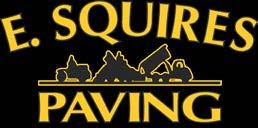



Serving the Community for over 90 years Serving the Community for over 90 years




A new hotel on South Union Street, scheduled to open next spring, is a celebration of local history and a refreshing response to the growth of visitors to Kennett Square
By Gabbie Burton Contributing Writer
As tourism continues to grow in Kennett Square, one local nonprofit is continuing to tie economic opportunities to local philanthropy.
Square Roots Collective, a Kennett Square-based nonprofit that operates local businesses and invests profits back into the community, is preparing for the opening of The Francis, a new hotel located on South Union Street and scheduled to open next spring. It is an initiative that the agency hopes will connect visitors to the town’s history while simultaneously contributing to its future success.
“One of our big hopes was that the concepts we bring online would be embraced by the community, and that they would feel like community assets to Kennett Square,” said Stephanie Almanza, president and real estate lead at Square Roots Collective.
The Francis will be the second hotel Square Roots Collective (SRC) has opened in Kennett, with the first being the Artelo on Birch Street, which opened in the summer of 2024. In addition to the hotels, the SRC also operates The Creamery of

Kennett Square. All profits from The Creamery, Artelo and the soon-to-be Francis are donated to local non-profits and initiatives, including Anson B. Nixon Park, Family Promise, United Way, Voices Underground and several other recipients.
While the Artelo transformed a former motel into an art focused lodging offering 14 rooms, The Francis is transforming a former private residence turned apartments into a boutique, eight-room hotel that celebrates local history and continues SRC’s mission to develop ideas that create a strong sense of place.
“We want our concepts to feel like they fit in their environment, and that’s where we believe in taking a beautiful historic residence that was built in the 18th century - that really just needs a little love - and reintroduce it,” said Almanza. “This region and this town have a lot of really rich history, and I think there’s multiple ways to tell the story of that history. Restoring and renovating an old and beautiful residence and bringing it back to life is one way to do that.”
Continued on Page 44

Continued from Page 42

Each room in The Francis will focus on and celebrate a part of Kennett Square history. The first suite is inspired by Thomas Milhous, a clockmaker and former owner of the home during the mid-1800s. Another suite is focusing on the Battle of the Brandywine during the Revolutionary War, where British soldiers encamped in Kennett Square the night prior to the battle on September 11, 1776. Other rooms will include themes of local flora and fauna, stories of the Lenape tribes whose land Kennett now sits on, and the Underground Railroad and other immigrant stories and their impact on Kennett Square. Almanza shared that SRC has partnered with Lynn Sinclair of the Kennett Heritage Center to help tell these stories of Kennett Square’s history.

working with Riverwards General – a full-service interior design firm based in Kennett Square - to curate the interior design of the rooms and tie the history of Kennett Square to a beautiful and comfortable hotel experience.
“Riverwards General has done an incredible job of thoroughly thinking through how each room is going to reflect the history it’s telling from a design standpoint - through furniture, fabrics and patterns,” Almanza said. “A guest will be able to enter the room and not only experience its beauty but also connect with its historical theme and want to know more. Throughout the rooms and the hotel, there will be literature that will encourage our guests to visit the Heritage Center to learn more, or to look online and do more research.”
“Finding these cool, important stories and history of our region will enable the Francis’ guests to engage and add another level of the richness to their experience here,” Almanza said. “I think what we really are looking to do is elevate the different history and storytelling of our area.”
In order to tell the local histories, the hotel team is
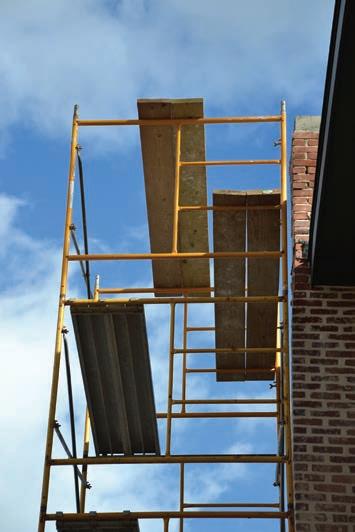
In addition to the historical stories each room will tell, Almanza shared that The Francis will also feature amenities including a courtyard, kitchenettes and sitting rooms in some suites that she hopes will enable guests to have an elevated experience or enjoy longer stays on site.
Continued on Page 46



Continued from Page 44

While The Francis is already celebrating Kennett Square, the question remains if Kennett Square will celebrate it back. Although the hotel’s profits will be invested back into the community, the concern of Kennett’s development into a tourist town at the expense of its resident is hard to ignore. Square Roots Collective seems to straddle the two versions of Kennett Square with The Francis, celebrating Kennett history and donating to its success and local community, while also catering to its visitors and tourism market.
“We’ve seen a lot of businesses grow in the area – several wineries and art galleries, and great restaurants to go to - and so there is this collective energy of people wanting to step out into beautiful Chester County and the Brandywine Valley, and we’re feeling that extend to Kennett Square, as well,” Almanza said. “What’s been important to us in our concepts is making sure that we complement the beauty and the reason that people really want to come here.”
Fitting in with the existing scene in Kennett Square was a point emphasized by Almanza in the vision of the hotel and what Square Roots Collective wants it to contribute to the community.
Continued on Page 48



Continued from Page 46

“Kennett Square doesn’t have much supply of hotel rooms in the surrounding area, so the best way to kind of feather in some overnight lodging is to create these smaller, boutique style hotels that fit the community around them,” Almanza said. “I really think it enhances a person’s stay because it now becomes part of your experience, versus experiencing Longwood Gardens, experiencing Winterthur and all these great wineries and assets, and then going back to your hotel that is not within walking distance to the great opportunities happening in the borough just a short walk away.”
As The Francis prepares for a spring opening and awaits feedback from community members and visitors, Almanza said that the new hotel echoes SRC’s main goals of giving back to the community, both through profits and value added to the local economy.
“This is about being able to feel the energy and the buy-in from the community,” she said. “The Francis began as a private residence, and it is next to people who have lived in town for a long time, and so we really want the residents to feel like it’s a value add to the community, one that adds beauty and honors our history.”
The Francis is located at 205 South Union Street in Kennett Square. To keep up-to-date about its progress toward its Spring 2026 opening, visit www.thefrancisksq.com.

To contact Contributing Writer Gabbie Burton, email gburton@chestercounty.com.


Photos by Jie Deng | Text by Richard L. Gaw



For interior & exterior designer Jane Norley, the inspiration she received from her grandparents’ home has transcended into a life –and career – that celebrates style
For those fortunate enough to be anointed with a creative spirit, the origins of those gifts are often traced back to the impressionable time of childhood - a place. For Jane Norley of Unionville, that place was Macon, Georgia, where her grandparents James Edmund Ferguson and Mary Evans – an architect and an interior designerlived in a beautiful Southern home.
It was a sacred place to the young girl, filled with nuanced rooms of various treasures and heirlooms, a stunning outdoor garden dotted
Continued on Page 53



Continued from Page 51
with roses and camellias and art on every wall.
“That time of my life was magic,” Norley said of the home. “There was beautiful sunlight, gorgeous details and architecture, but most of all, it felt so warm and comfortable because my grandparents had designed and built it for themselves. It was not grand and ostentatious, but it suited their practical nature.
“The two of them together, created this wonderful lifestyle of architecture and design. Their home permeated every cell of my being and that is what I took with me as an adult – that life should be safe, fun and comfortable. As I got older, I thought, ‘How do I make what I learned so intuitively as a child into something I can offer others, to help them discover what they want to feel in their own homes?’”
At the Lunar Meadows home she shares with her husband, Joe, Norley has brought the same aesthetic essence of her childhood memories to both its interior and exterior spaces. Each room serves a conversation place, filled with vintage pieces, found treasures and framed art that is illuminated by the sun during the day and softened by the moonlight at night. Outside, her gardens are a sweet embrace of florals and pastoral flow.
These expressions are what she has brought to her long career as an interior and exterior designer.
“When I had my own design company for 25 years – which started in Los Angeles and carried through to West Chester – I would impart upon my clients that I wanted their home not to reflect my personal style, but to reflect theirs,” she said.
“During our work together, I had no cookie-cutter plans for my clients to choose from. Rather, it was about digging deeper, because I wanted to know what they wanted to feel within their home.”
Throughout her career, Norley - whose background is in architectural space planning - first trains her creative eye on how her ideas are melded within the function of a home.
“In my career, I have worked with a lot of builders who would construct the homes, and my job has been to compliment the building process, and that always entails asking my clients, ‘How are you
Continued on Page 54



Continued from Page 53 going to live in the house, and what is the natural flow from room to room?’” she said. “I do not come in with the idea of doing something beautiful and artsy. I have to work within the confines of what has already been constructed.”
Norley - a designing consultant with Classic Lawns and Gardens in Kennett Square – believes that the same attention to detail should transcend a home’s outdoor places, from selecting the right greenery and florals to complimenting those colors and textures with outdoor furniture.
Recently, Jane and Joe designed a daffodil garden in the middle of their lawn in the shape of a crescent moon, so that next Spring, when the garden springs into being, they will form a near perfect ‘C’ shape. They also recently planted a variety of a magnolia tree called “Moonglow,” and when the moon rises, its leaves will reflect its light and glisten beneath the nighttime sky.
Their home is called Lunar Meadows for a reason.
“The moon is always in a cycle, and we call it, “living in time outside of time,’ and to us, most of the world lives according to the sunrises and sunsets,” she said. “You go to work nine to five, you have your weekends and it’s all very regimented. We enjoy lunar time – time outside of time – because when we come home to our sanctuary, the time that we dedicate to our work stops, and we begin to live in a more spontaneous cycle.”
If the idiosyncrasies of Jane and Joe’s sense of style include the ritual of following the patterns of the sky above us, particularly at night, then the professional life that Jane leads as an interior and exterior designer is to move each client to find their own idiosyncrasies, in homes and gardens that celebrate their own sense of style.
“Style is that which we show the world, and what you feel confident in sharing,” she said. “Style changes over a period of time. When you’re thirty, you may want to show the world one thing, and when you’re sixty, it is okay to give yourself permission to show the world something else.”
You can find Jane Norley on Instagram at @designcourtesan and @lunar.meadows.
To contact Staff Writer Richard L. Gaw, email rgaw@chestercounty.com.

In defiance of the title of the author Thomas Wolfe’s most famous book, You Can’t Go Home Again, Michael Bertrando – an actor with a thick resume of experience in New York, Chicago and Los Angeles – remains a familiar face behind the counter at Sam’s Sub Shop in Kennett Square. Recently, Michael met with Kennett Square Life to talk about the family business, working with Robin Williams and Mark Ruffalo, and his latest role on the HBO series, Task.
Kennett Square Life: Sam’s Sub Shop has been a fixture in the Kennett Square community since 1946. It was first opened by your grandfather Sam Frabriso and for the past several decades, it has been operated by your parents, Sandra and Bert. How old were you when you first started working there, and what jobs did you have?
Michael Bertrando: I started here when I was tall enough to reach the candy counter. My first job here was giving out candy, and I began to learn the cash register when I was in the first grade when my grandfather would make me do math in my head so that I could give out change. By the time I was in the fifth grade, I began making sandwiches, and by the sixth grade, my grandfather taught me how to use the slicer, and then I began making sub sandwiches. I would prep the vegetables, fill up the condiment jars, and often join my grandfather on lunch deliveries to the mushroom workers at the MGA Cannery on Birch Street. By the time I’d reached middle school, I was working here after school and on the weekends.
The level of chatter at Sam’s Sub Shop has become the local stuff of legend, perhaps rivaling Burton’s Barber Shop as the unofficial cathedral of gossip in Kennett Square. Give the readers of Kennett Square Life some of the topics that are normally discussed between the crew and the customers.
Many of the conversations here start with, “Did you hear about …?” We’ve known generations of families, so we ask them how their children are doing. Many of our customers are from the mushroom industry, so there’s always a lot of talk about what’s happening there. The biggest conversation here centers around food – new restaurants in the area, for instance, and people like to talk about what they had at a certain place for dinner the night before. For several years, our most frequent visitors gathered with my grandfather for morning coffee to discuss everything under the sun: from politics to fishing spots to golfing.
Lately, the biggest topics have had to do with traffic and parking in town, the expansion of Longwood Gardens and the Kennett Library being built.
The shop’s sign - Subs, Steaks, Hamburgers – is seen by thousands of pedestrians and drivers along State Street every day. From what your customers have told you, what’s the businesses’ specialty - subs, steaks or hamburgers?
We’re called “Sam’s Sub Shop,” so I would say subs. Our Italian subs are the number one item here, followed by our cheesesteaks coming in a close second, and our breakfast sandwiches are a go-to for many of the early bird workers.
Your role here at Sam’s Sub Shop is only one part of who you are. You have traveled the world as a professional clown. You were a member of the improv comedy circuit in New York and Chicago. You also have appeared in several commercials for top brands like Mercedes, McDonalds and Nintendo. When did you first catch the performer bug, and where did you first begin to cultivate your talent?
I had always enjoyed movies - particularly the comedies - and I remember wanting to be an actor but not knowing


Continued from Page 56
what that meant. My father was a teacher at Unionville High School, and he told me to audition for the school play, so I did. I got a little part as a bumbling train conductor, and I remember walking out on stage and everyone laughing. That started everything for me. On my birthday in 1996, my parents took me to Broadway to see a revival of A Delicate Balance that starred Elaine Stritch, and that was when I thought that the idea of being on stage would be awesome. After attending Penn State for a few years, I studied theater with Théâtre du Soleil in France, and it was there that I first discovered improvisation. I then went to New York City where I joined the newly-formed Upright Citizens Brigade, who was co-founded by Amy Poehler. She was supportive of my work and clued me into the fact that most of the early members of the Upright Citizens Brigade had studied comedy in Chicago, so I went out there and began to get involved with the Improv Olympic, The Second City and the Annoyance Theatre.
Chicago was not only the center of comedy, but also the center for advertising. Because of that, I began to audition for commercials. My big break came when I shot a series of 12 commercials for Nintendo Gamecube, which helped me fund stage projects that I began to work on.
There is a common misperception that the only job of a professional clown is to climb into a costume and do silly things in order to please an audience. In reality, it’s much more complicated than that, yes? It involves constant training and education. Talk about the preparation that goes into the job.
My background in improv made the clowning begin to become easier to do, but the truth is that you’re going out on stage without a rope. I studied with a master in France, Philippe Gaulier, and he gave me a very important lesson: When you’re out there flopping and no one’s laughing, that’s the moment when you become a clown, because if you can stay there and stick with it, the audience then gets on your side and then you have them in your hand, and then you can do whatever you want.
Every comedian alive has his or her comedic role models. Who are yours?
A lot of the stage characters I’ve created are based on customers at Sam’s Sub Shop. I would bring their personas to the shows. I’ve admired Pierre Étaix and Roberto Benini, but one of my favorites has been Robin Williams. Several

years ago, I was working with performing at the Upright Citizens Brigade in Los Angeles, and one night I saw that Robin was in the audience. At the end of the night, he came up on stage with us, and I got to perform with him. After some time, he became a regular just so he could get up on stage with us. To be on stage with someone I admired was tremendous.
In February of last year, you received a phone call that changed your life. It was from a casting agent for the HBO crime drama “Task,” asking you if you would consider being a stand-in for the actor Mark Ruffalo. What was your first reaction to receiving the news?
At first, I wasn’t sure I wanted to do that, because while I really would have loved to act in it, being a stand-in wasn’t an acting part, and I was also going back and forth from my home in Brooklyn to help my parents at the store Kennett
Continued on Page 60


Continued from Page 59
Square. Then I thought, “Task” would be filming in the area, and when I realized that I could help out the family and be a part of the cast, of the show, I accepted the job.
When I arrived on set, however, I began to question whether it was the right idea, but after meeting the director and Mark Ruffalo, I found them to be very supportive, and I began to think I could achieve my goal to get a speaking part in the series.
One day, one of the production assistants told me that there would be a small part coming up, so I went up to the director Jeremiah Zagar about it. He said that he would talk to Brad Inglesby, the show runner and creator of the series, who said, “Yeah, Michael would be great for that part.”
How did you manage to be on set and continue to manage Sam’s Sub Shop? Your schedule must have been insane. Bring us through that exhausting balance of obligations.
The filming was from Monday through Friday, and because Mark was there every day, I was there every
day. On the night shoots on Thursdays and Fridays, I wouldn’t have to be on set until 4 p.m., so I could work at Sam’s Sub Shop until 3 p.m. While on set, I would still be on the phone with the meat and produce suppliers. It was a lot.
Where did the filming for “Task” take place?
Most of the filming took place at a sound studio in Aston near Neumann University. The good guy/bad guy’s house was in Downingtown. Many of the bar scenes were filmed in Coatesville, which was funny because between shoots, I would join a lot of the “known” actors outside and often those driving by would recognize me and not them, and yell out “Sammies!”
I’ve heard that many A-list actors like Ruffalo choose to sequester themselves in their trailer between shoots, but you struck up a friendship with him. What were the commonalities that helped connect the two of you?


At first, Mark didn’t know that I am also an actor, but as we began shooting takes, he began to realize that I had acting experience. We began talking and found that we had similar backgrounds in acting, doing commercial work and our Italian heritage. He told me about his experiences shooting commercials, and his start on the stage. He was interested in knowing about my career in clowning and comedy and was fascinated to know about Sam’s Sub Shop. He was always out and about and spoke with everyone on the set.
I read that you not only did you learn from Mark, he learned from you.
A few times, the directors would watch me do some-
thing during a shot set-up, and Mark would tell me, “I’m going to steal what you did there.” I remember as he was preparing for one big scene, he asked me, “What would you be thinking here?” I told him, “One of these people is betraying you.” Because the series takes place in this area, the “Delco” accent is heard throughout, and Mark would ask me to repeat particular lines of his dialogue back to him. “Say ‘Wissahickon,’” he’d tell me. “Say, ‘I’m going to Wawa.’”
I heard that Sam’s Sub Shop catered a few times on the set and that the reaction to the food was amazing, and that menus from the shop appear throughout the series. Great brand placement!
Continued from Page 61
I befriended some of the staff in craft services, and we began to talk about how Sam’s could possibly provide catering to the set. Mark loved the idea. He told me, “I want to call up your mom and order subs from Sam’s Sub Shop!” I told him that he’d better not; it was 12 o’clock at the height of the lunch hour.
I hear you’re developing a new stage show, aptly entitled, I Am Not Mark Ruffalo. Care to give the readers of Kennett Square Life a teaser?
It’s a fictional account of my experiences on the set of “Task.” The running joke between Mark and I was that everyone liked me better than him. Even when I got the small role in the series,
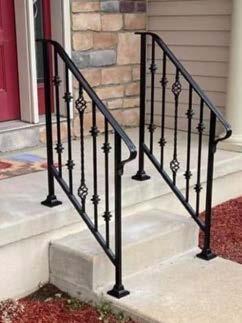
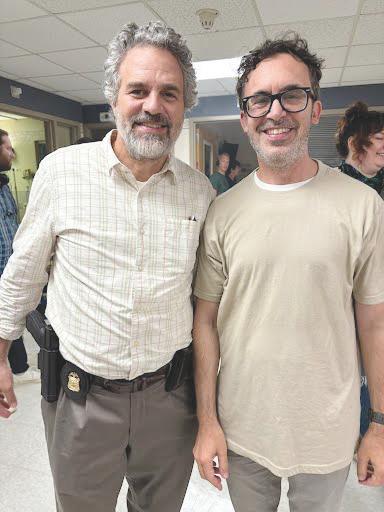
Mark walked up to me and said, “If one more person tells me that you got a part in this, I am going to punch them.” As I would continually receive compliments from the directors, I joked to Mark, “You has better watch out. I’m going to replace you.”
These experiences are forming the genesis for the show – the stand-in taking over for the lead actor. We’re developing the show in New York City, and now that the script is complete, I am fine tuning it to become a 40-minute show.
Next year, Sam’s Sub Shop will celebrate its 80th anniversary. Has there been talk of any special events to mark the occasion?
Continued on Page 64


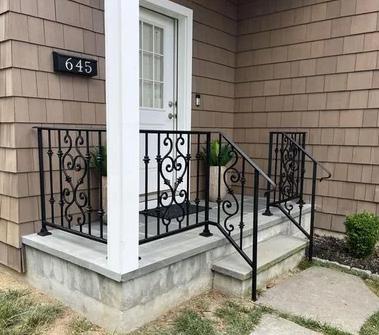



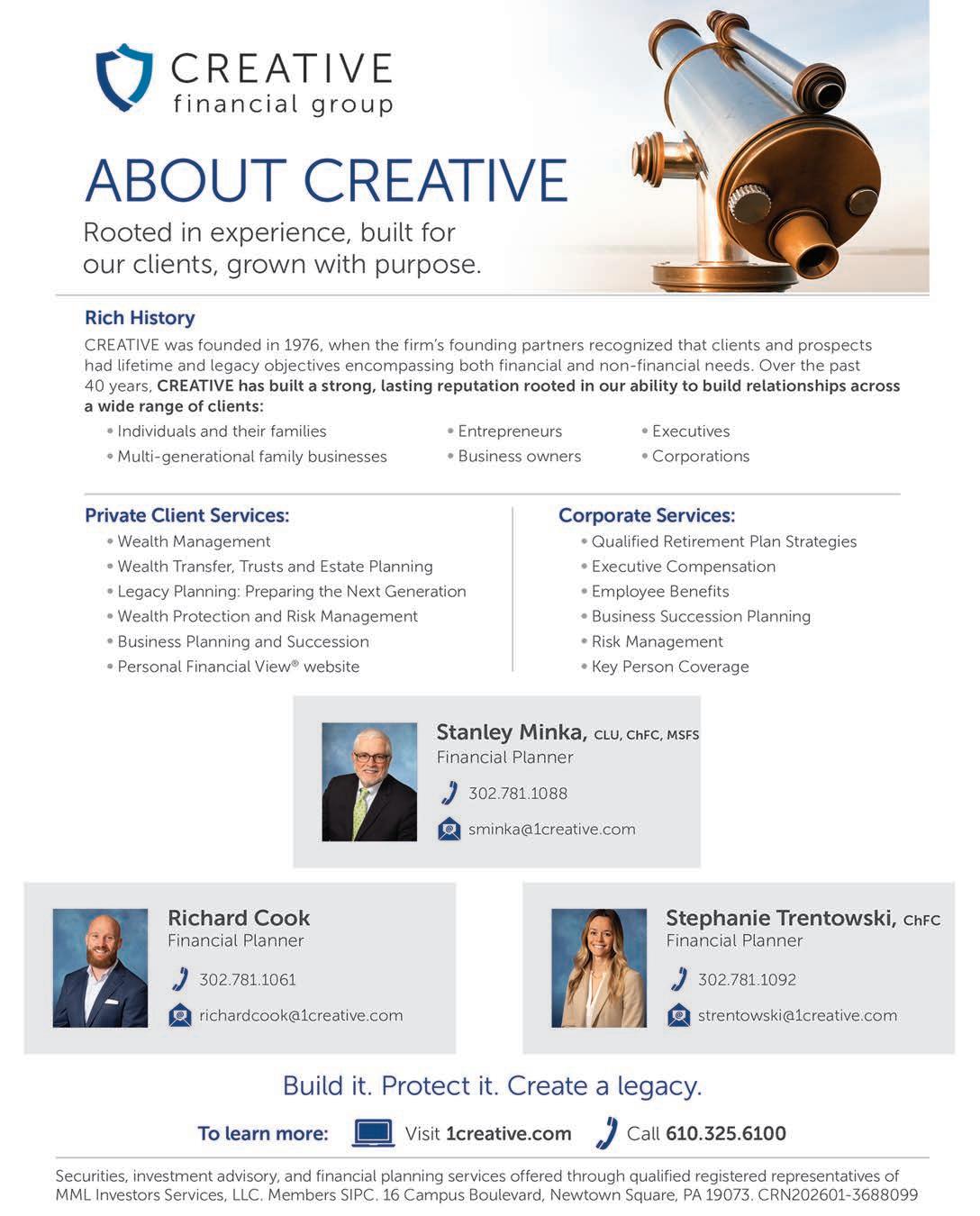
Continued from Page 62
Our 75th anniversary occurred during COVID-19, so for our 80th anniversary, we’re planning something nice for our customers.
What is your favorite spot in Kennett Square?
If I’m going out to eat, my parents and I like visiting the bar side of Lettie’s Tavern. There’s some irony here; before my grandfather opened Sam’s Sub Shop, he was a bartender at Lettie’s when it was called The Green Gate, and the bartender there now is also named Sam.
I also enjoy the Italian-American Club on Ways Lane.
You throw a dinner party and can invite anyone – famous or not, living or not. Who would you want to see around that dining room table?
I would definitely like to see my grandfather and my Aunt Mary there. I would also like to invite Woody Allen, the Italian Chef Lydia Bastianich, and just for fun, I would like to invite Richard Pryor, because when I was a kid, he was funny at a time when I wasn’t allowed to watch him.
What item can always be found in your refrigerator?
Lupini beans, a savory and salty bean. It’s a healthier version of a salty snack.
~
Richard L. Gaw
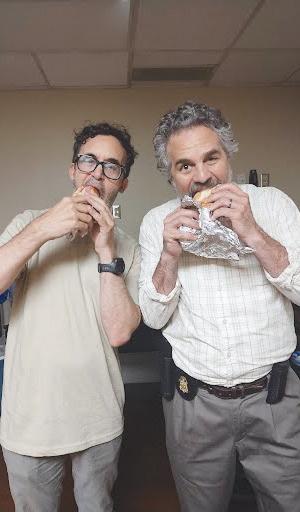
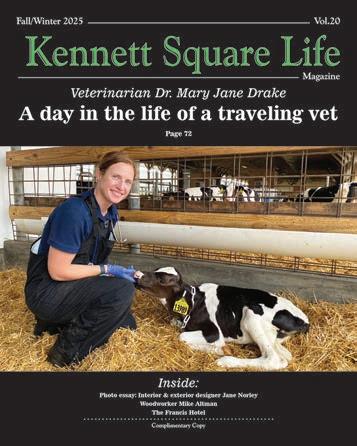



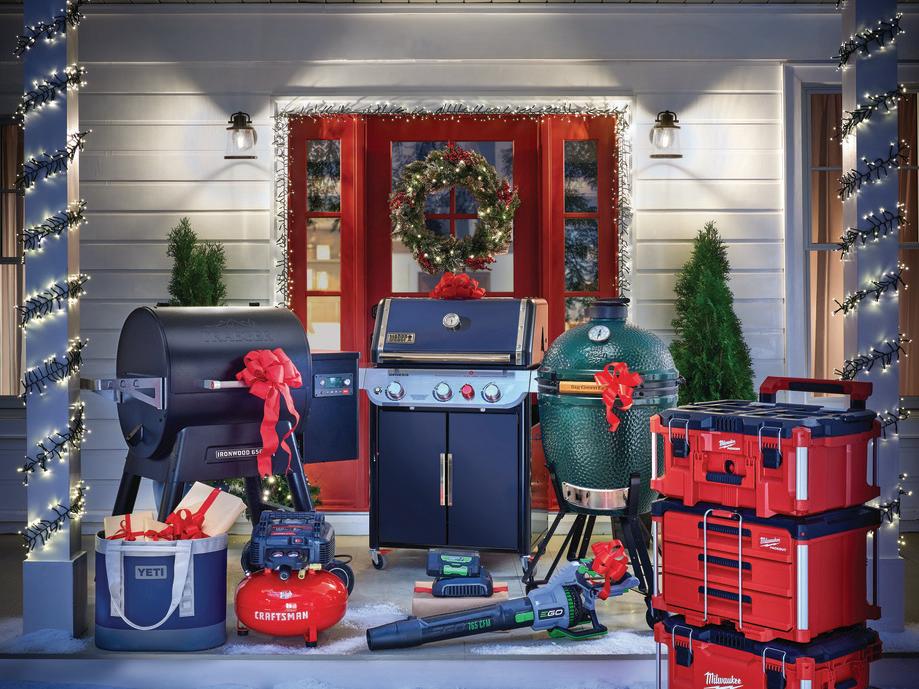


By JP Phillips Contributing Writer
New Bolton Center sits behind an unimposing sign just a few miles west of Landhope Farms at 382 West Street Road. Some residents may be surprised to learn that it is home to a top-rate teaching facility and research center in addition to being a world-renowned large animal hospital. According to Rita Giordano, the director of content and news media for the University of Pennsylvania’s school of Veterinary Medicine (Penn Vet), more than 425 employees work at the center. That includes 70 Penn Vet faculty members and clinicians who administer veterinary care, teach, conduct research, and work in the diagnostic and pathology laboratories. According to their website, Penn Vet graduated its first students almost 130 years ago, in 1887. In 1952, 200 acres were purchased by the school in East Marlborough Township and New Bolton Center was born. Today, the New Bolton campus is comprised of 700 acres and includes inpatient and outpatient hospital facilities, rehab areas, research labs, their field service headquarters, and teaching herds for the students to learn diagnostic skills and proper care.
including racehorses. Barbaro, the famous 2007 Kentucky Derby winner, was treated here after he suffered a severe injury during the Preakness.
The hospital is equipped with many advanced features, such as a warm water recovery tank. Animals coming out of anesthesia may be disoriented and prone to hurting themselves as they regain consciousness. The surgery center has a special monorail system that transports the animal into a pool where they regain consciousness in a special raft and harness. They are returned to dry land when they are fully conscious, reducing the chances that they will re-injure the surgical areas.

New Bolton Center is really three organizations in one: large animal care, teaching school, and research center. The hospital handles more than 6,000 patients annually, and is open 24 hours a day, seven days a week. Patients include goats, sheep, pigs, cows, alpacas, and horses—
Other facilities and services include a dedicated equine performance evaluation area, breeding advice and services, an animal treadmill and the latest in high-tech ultrasound, echocardiography, EKG, and radio-telemetry equipment to detect health problems.
Owners can drive their animals to the center—or the animals can be treated on the farm by the Field Service division. According to Giordano, there are twelve clinicians with fully-equipped trucks that travel throughout Chester County making regularly scheduled farm calls and emergency visits. Eight of them specialize in horses, and the other four are food animal vets who focus on milk-and meat-producing animals. According to the New Bolton website, the large animal Field Service Ambulatory Practice treats around 21,000 patients across 2,800 square miles in southeastern
Continued on Page 68
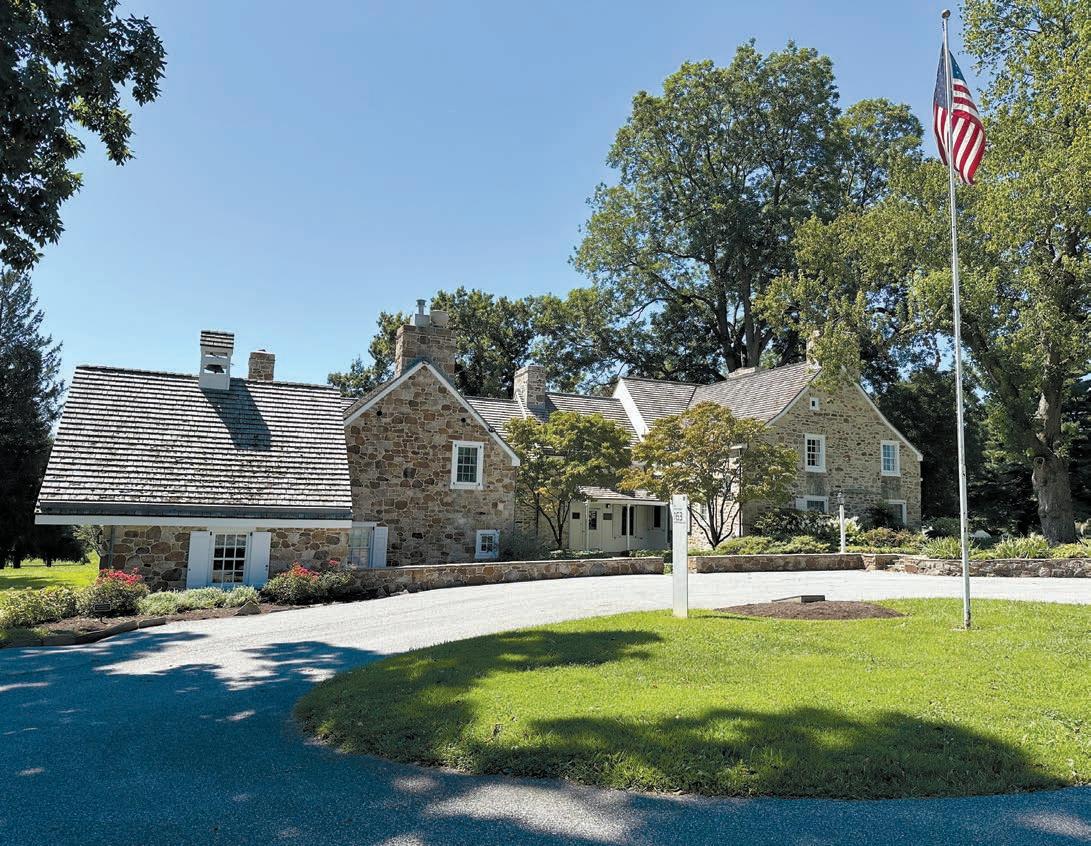
Continued from Page 66
Pennsylvania and the surrounding regions. Giordano added that, as a group, they travel nearly 183,000 miles over the course of a year.
Dr. Mary Jane (MJ) Drake is one of the traveling food animal vets.
“We’re the ambulatory arm of the New Bolton Center,” she explained.
Each vet has a fully equipped truck with just about everything they might need for a routine or emergency visit. “We have to bring the hospital to the farm,” Drake said. The truck has drawers for all sorts of medications, vaccines, portable ultrasound, surgery equipment like washes and sutures. She even has a hose.
“If I’m in a field, and I need to wash my boots or I just need water to clean something off, I have water right in my truck,” Drake said. “All my vaccines are in the fridge. All of my needles and syringes that we use and blood tubes… [we] just have to be ready for anything.”
Another arm of New Bolton’s operation is to serve as a teaching hospital. After obtaining an undergraduate degree, the prospective student has to demonstrate real interest and experience besides academic prowess.
“It’s expensive and it’s four years more of school, so they [Penn Vet Admissions] want to know that you’ve done your homework before just jumping right in,” she said.
The first two or three years consists of classrooms, labs, and lectures to build the foundational knowledge, which occurs mostly at the main campus in Philadelphia.
Drake explained, “The clinical year - the last year and a half of vet school - puts students working alongside veterinarians in the hospital, with the residents and interns seeing cases here at Bolton.”
Drake said that there are different specialties—food ani-


mals and small animals and exotics (hamsters, birds, rabbits, snakes and other reptiles, for example), although each student must learn about every animal. In fact, the North American Veterinary Licensing Examination (NAVLE), which every practicing vet in the U.S. must pass, is standard regardless of the student’s specialty.
Drake said that the veterinary field is dominated by women and small animal (versus large animal) practice. “According to the AVMA (American Veterinary Medical Association), among 2024 vet school graduates nationwide, 81 percent were female,” she said.
In the 2026 Penn Vet graduating class of about 130 students, over 80 percent plan to go into small animal practice. Over time, this will cause significant challenges in caring for farm animals.
Drake is also a teacher, giving students hands-on experience through calls on local farms. “They’ll come on the calls with me every day to see what I do and help, “ she said. She takes one to three students out with her most days, discussing symptoms, remedies, and what to expect at the next call as she drives from farm to farm.
New Bolton also has its own herds for both research trials and for giving students real-life provider experience. There are 180 cows permanently living on the Marshak Dairy located on campus.

The third key component of New Bolton Center is as a research facility. Giordano provided a list with key projects happening right now:
Equine
• Understanding the causes of laminitis (a common, painful hoof condition) to improve the prevention and treatment of the disease;
• Exploring regenerative
Continued on Page 70

Continued from Page 68
therapies to improve musculoskeletal healing and cartilage repair in horses with post-traumatic osteoarthritis;
• New procedures for optimizing lung ventilation and blood flow in anesthetized horses;
• The effect of chiropractic adjustment on horse movement;
• Surgical approaches to treat fungal infections of the guttural pouch in the throat of the horse (potentially life-threatening);
• New methods to detect the bacterium that causes equine Strangles (an upper respiratory disease that is common and highly contagious);
• Effect of a treatment to control insulin levels in horses with metabolic disease; and
• Methods to measure eye pressure in horses with eye disease.
• Upcycling culled citrus fruit as feed for dairy cattle, reducing CO2 emissions and feed costs;
• Introducing an additive to colostrum to increase beneficial gut bacteria in calves; and
• Effects of dietary zinc on the gut microbiome of the gestating cow and neonatal calf.


Drake explained that research done here can often be applied to improving the environment and human lives.
“There’s microbiome research in cattle, looking at how we can alter or help the microbiome of cattle to reduce methane emissions,” she said.
Drake also highlighted orthopedic research, where studies on arthritic horses can be used as a transitional model to apply learnings to human osteoarthritis.
The research is funded by a combination of federal, state, and private grants. According to the March 17, 2025 article in the Penn student newspaper The Daily Pennsylvanian, Penn received over $1 billion in federal research funds in 2024 (all departments, not just Penn Vet). With the current federal administration position on tying funding to upholding specific priorities and values, there is understandable concern.
Penn posted a statement on their communications website. “Penn is closely monitoring federal policy changes affecting institutions of higher education and academic health systems. These include a broad range of government actions that impact the University’s missions, operations, and community. Penn’s leadership is directly engaged with public officials to advocate vigorously for the essential role of higher education, scientific discovery, our values, and our service to the greater good.”
Learn more about New Bolton by visiting their website (https:// www.vet.upenn.edu/new-bolton-center/) and following their Facebook page (Penn Vet New Bolton Center).
Serving the Chester County business community since 1866 Your source for local news, government, schools, sports and much more! Published every Wednesday. To subscribe call 610-869-5553 ext 10.





• Landenberg Life • Kennett Square Life
• Chadds Ford Life • Newark Life
• Middletown Life • Cecil County Life
• Greenville & Hockessin Life
Each of our Life magazines offer “hyper local” news from each community in the form of features, proles, history, entertainment and home and garden stories. Our “coffee table “ keepsake format with extensive direct mail appeals to a wide variety of advertisers
• Southern Chester County Chamber of Commerce CONNECTIONS
• Western Chester County Life
• The Oxfordian
• Cecil County Chamber of Commerce
Annual Business Directory
• Exton Region Chamber CROSSROADS
Custom tailored magazines that are essential for your local Chamber of Commerce and business community.
• Mushroom Festival & Visitors Guide
• Unionville Community Fair and Farm Show
• Kennett Run Event Guide
• Middletown Peach Festival
• Penn Township Newsletter
• Mushroom Cap Half Marathon Guide www.chestercounty.com
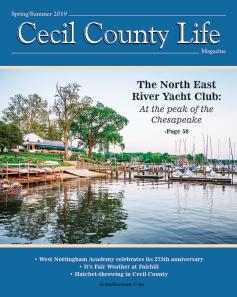
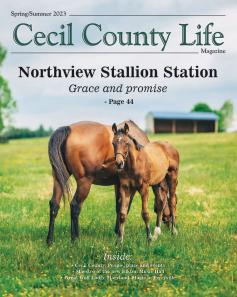



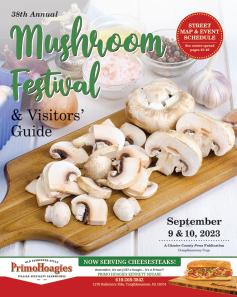
By JP Phillips Contributing Writer
All Creatures Great and Small is currently one of PBS’s most popular TV shows. It is based on the books written by James Herriot about his experiences as a traveling country vet in England’s Yorkshire Dales during the 1930s and 1940s. The original BBC series was faithful to the books, and aired during the late 1970s through 1990. The sixth season of the current series, which takes some liberties with the books, is set to air in January of 2026 on PBS.
In many ways, the rolling hills and farms in our area are similar to the places described in Herriot’s stories. According to the 2022 Chester County Census of Agriculture, livestock, poultry and related products are a $127.9 million business, with the county ranking 15th in the state. Who here provides care to our farm animals and, in turn, is an important partner in keeping our meat, milk and related products safe for consumption?
Meet Chester County’s own “James Herriot,” Dr. Mary Jane (MJ) Drake. She is an Assistant Professor of Clinical Food Animal Field Service at the University of Pennsylvania’s
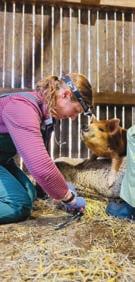
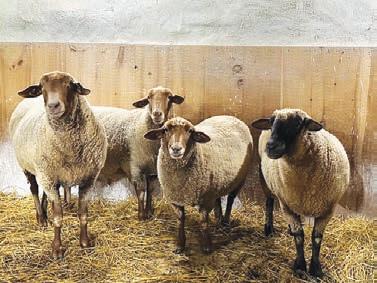
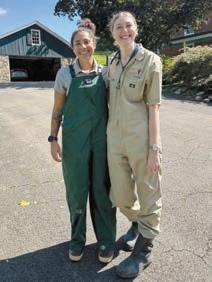
1 2 3 4
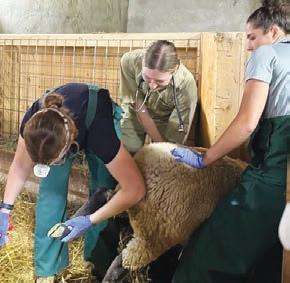

New Bolton Center in East Marlborough Township. She is one of 12 traveling Penn vets in New Bolton’s Field Service group. Her job is two-fold: calling on scheduled and emergency farm appointments throughout Chester County and vicinity, and giving fourth-year students of The School of Veterinary Medicine at the University of Pennsylvania hands-on experience.
Originally from the Newark, Del. area, Drake and her husband recently purchased a home in Kennett Square. She studied biochemistry at the University of Virginia before earning a Ph.D at Penn.
“I wanted to study viruses and pathogens and understand how they hijacked cells to replicate, and how they could cause profound disease,” Drake said. She thought that she would eventually work with pharmaceuticals. “And then when I was in grad school, working in a lab, I realized I wanted to be outside and do something on a day-to-day basis that had a larger and more direct impact.”
While she found the research to be very interesting, progress was slow.
“I want to be able to do something where I can really see the benefit of on a day-to-day basis,” she said.
Drake explored careers while in graduate school. She shadowed a friend who was a large animal vet doing cattle export work. She was ensuring that animals leaving the United States weren’t taking any infectious diseases—perhaps common here but foreign in other countries-- with them where they could devastate a healthy herd.
“It triggered something in me—this is the application I was looking for,” she said.
The work still dealt with infectious diseases, but in a realworld way. It checked all the boxes for her, and Drake was sold on becoming a food animal vet.
“That intersection of animal health and human health, right? Because we can share diseases with animals and
Continued on Page 74
Continued from Page 73
they can share them with us, and the environment as well,” Drake explained. “And so I finished up my Ph.D and I was able to continue to go to Penn for vet school.”
Drake graduated in 2020 with a Veterinariae Medicinae Doctoris degree, or “VMD.”
You can find Drake most days driving through the countryside in a fully equipped Penn Vet truck that has just about everything she would need to diagnose and treat cows, goats, sheep, pigs—every farm animal except horses, which are serviced by the traveling equine vets. In addition to medicines, vaccines, antiseptics, surgical material and various instruments, she usually travels with two or three students as part of their schooling. She discusses the upcoming call while she drives and what they are likely to find, and sprinkles them with questions to prepare them for the visit.
Drake sees farms weekly, bi-weekly, monthly, or on an as-needed basis. Farmers usually separate the animals that need examining to one area before she arrives. She said that dairy farms are seen most frequently because, besides needing normal care, cows must give birth to produce milk.
“We’re able to use our ultrasound (if needed) to actually look at her uterus and tell if she’s pregnant or not,” Drake said. “Cows are typically on a schedule—they usually have a calf every year. We’ll help diagnose pregnancy and identify cows that aren’t pregnant, so that they can be monitored
and hopefully bred again.”
Artificial insemination is the most popular way to impregnate cows, Drake explained, and many farmers handle this themselves or use companies that travel from farm to farm providing this service.
“We have gone away from using a live bull in dairy just because the cows have to be handled quite a bit—they come in to get milked twice a day,” she said. “Having a potentially aggressive animal within that group is a big safety concern.”
Most baby animals Drake deals with are born in the spring, and it’s one of her favorite parts of her job.
“The lambing and kidding season is usually January to March or April, and then the same thing with beef cattle,” she said. “I think one of my favorite lessons in vet school is that everything wants to be born in the spring. It’s the season of new life, but it’s also when it’s starting to rain. It’s getting warmer. The grass is growing. There are lots of nutrients available in the environment to feed both the mom and the baby, so a lot of species have evolved to cycling or wanting to get pregnant during the time of year that would lead to them having a baby in the spring.
“Sheep and goats--their gestation lengths are about five months and so they get bred in the fall. Horses have an 11-month gestation, so they start cycling in the springtime to have a baby almost a year later, while cows have a ninemonth gestation.”

Drake said that farmers and herd managers are very knowledgeable about their animals, and do much of the care themselves. Time during a call is frequently spent in conversation discussing animal husbandry, diseases, symptoms, and answering the farmer’s questions. She says that it’s important for the farmers to learn how to recognize symptoms and know whether it is something they can handle or when a vet should be called. While routine births are usually handled by the farmers, vets get called when the mom or baby is in distress. “Some of the most stressful but rewarding calls I have are calvings,” Drake said. “When a cow’s in labor and something is not going right – whether the calf is breached, or have their head back—I use my OBGYN skills to get the baby in the right position and deliver it. Being able to see a live calf, and mom feeling so much better now that she’s not in labor anymore,
“If you decide to become a veterinary surgeon… you will have a life of endless interest and variety.”
~ James Herriot, AllCreaturesGreatandSmall
and seeing her lick that calf—I think those are some of the most rewarding calls.
“I had a calving this winter. I think it was zero degrees outside. Luckily, when it’s in the barn and you’re working inside the cow, the cow’s warm, so you’re getting some heat from her. But as soon as everything’s done--the calf’s out, the mom’s okay— [you notice that] everything’s frozen. And then you realize how cold it is. But I think a lot of times you’re working in the heat of the moment, the adrenaline pumping, and you forget.”
Kennett Square Life accompanied Dr. Drake and two fourth-year graduate students, Hannah Anderson and Elise Nanda, for a morning on a beautiful September day. The first stop was the Lytle Farm in West Grove, where farmer David Lytle planned to take three Hampshire sheep to competitions, including The Big E--a multi-state fair held in Springfield, Mass. Because the animals were crossing state lines, they needed examinations and certificates to certify that they are healthy.
The next call was to see why a couple of Jacqueline Colyer’s Shropshire Dorset sheep were limping. It turned out that foot abscesses were the problem, and were lanced by Drake and the students. Colyer grows all the hay she needs for their feed and comfort on her Oxford farm. She also has her sheep sheered once per year and sells the yarn and craft kits.
Drake admitted that before going to vet school, she never read any of the James Herriot books.
“I had asked my boss at my first job, ‘Am I [even] allowed to be a large animal vet?’ And so, the next day, on my desk was his original copy from when he was a kid,” she said.
Drake continued, “The new version of the TV show came out the first year I was practicing, when I was an intern. It was interesting to watch and be able to feel a connection with the James Herriot character and the vets in that show.”
Continued on Page 76

Continued from Page 75
She noted some the similarities and the differences between the cases that she encountered and the ones that Herriot encountered.
“There are certain aspects of veterinary medicine that maybe haven’t changed,” she explained. “If a cow is down with milk fever, we still give them calcium, right? But at the other end, a lot has changed. We have a lot more advanced imaging. I have an ultrasound on my truck at all times, and we have mobile X-ray equipment-- we’re able to do a lot more.”
Drake continued, “Pharmacology research has provided us with more information about the best choices for how we treat our patients. But I think, in watching All Creatures Great and Small, on an emotional level, I could understand some of the challenges he was facing day to day--whether it was a tough client or a sick animal, and if he wasn’t able to help, or the victories that you feel…that was fun to be able to actually really understand what that character was going through.”
For Dr. Drake, every call is a new challenge and a new adventure—and that’s just the way she likes it.

